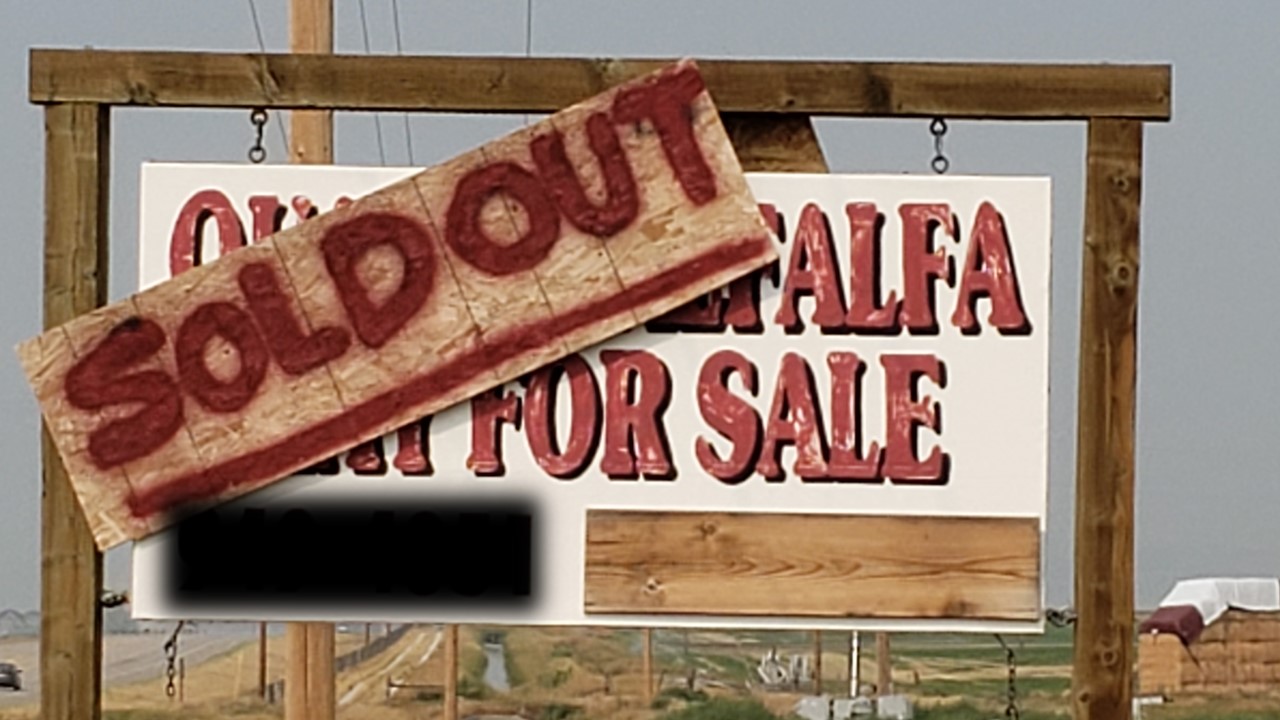Preventing Weed Invasion from Hay Shipments
Introduction

Drought conditions worsened throughout July, and hay is in short supply across Montana and the West. Hay purchased or donated from outside a local area or the state has the potential to contain new weeds and other pests like insects and diseases. Recognizing the need for hay and the risk of new pest introductions, here are some short-and long-term best management practices to prevent weed invasion.
Short-term Practices
When searching for and receiving hay, ask where it was grown and if it contains any known weeds. If that information is available, familiarize yourself with invasive plants from that area. You can view distribution records of weeds in Montana, the West, and the rest of the country on EddMapS. Consider local and in-state resources before choosing to buy hay from out-of-state, as this will reduce the risk of importing a weed not currently found in Montana. If possible, use certified weed seed-free forage. Once hay arrives, feed it in a limited area so that any new weeds will be concentrated in one spot instead of widely dispersed across a large area. Feeding areas should also be those that can be easily monitored for new weeds and treated with a broad-spectrum herbicide treatment in the future in case weeds resistant to multiple modes of action (e.g., Palmer amaranth, marestail) are introduced.
Long-term Practices
Monitor areas where hay was fed and be alert to any new or unfamiliar plants. If new or unfamiliar plants appear, identify them. Local Extension offices, county weed district offices, and the MSU Schutter Diagnostic Lab can help with identification. Control weeds before they produce seed; if weeds are found when they are already producing seed, remove plants and seeds and dispose of them in the trash. Delay moving livestock through an area with a new weed species until it is removed or contained. Document where new weeds are growing so the area can be monitored and treated, if necessary, in the future. These practices are especially important this fall and next spring through summer, but because some weed seeds remain viable for many years, continued monitoring for several years is recommended.
Resources
MSU Extension, Montana Noxious Weed Education Campaign, Montana Department of Agriculture, Montana Invasive Species Council, Montana Natural Resources Conservation Service, and the Montana Weed Control Association are partnering to produce and distribute educational materials surrounding this topic as well as other drought-related topics. Contact any of them for assistance, and see the following resources for more information:
- MSU Extension Ag Alert highlighting resources for drought-related challenges for ag producers
- MDA’s Hay Hotline, a marketplace to donate, buy, and sell hay and straw within Montana
- MDA has funding available for to assist with revegetation and noxious weed control for cooperative weed management areas (CWMAs) impacted by severe drought and/or wildfire
- NRCS has financial assistance available to farmers and ranchers impacted by severe drought
Further Information
For more information about this month's weed post, contact Extension Invasive Plant Specialist Jane Mangold. Past posts are available in the Monthly Weed Post Directory.
This weed post is also available as a printable PDF (645KB).
